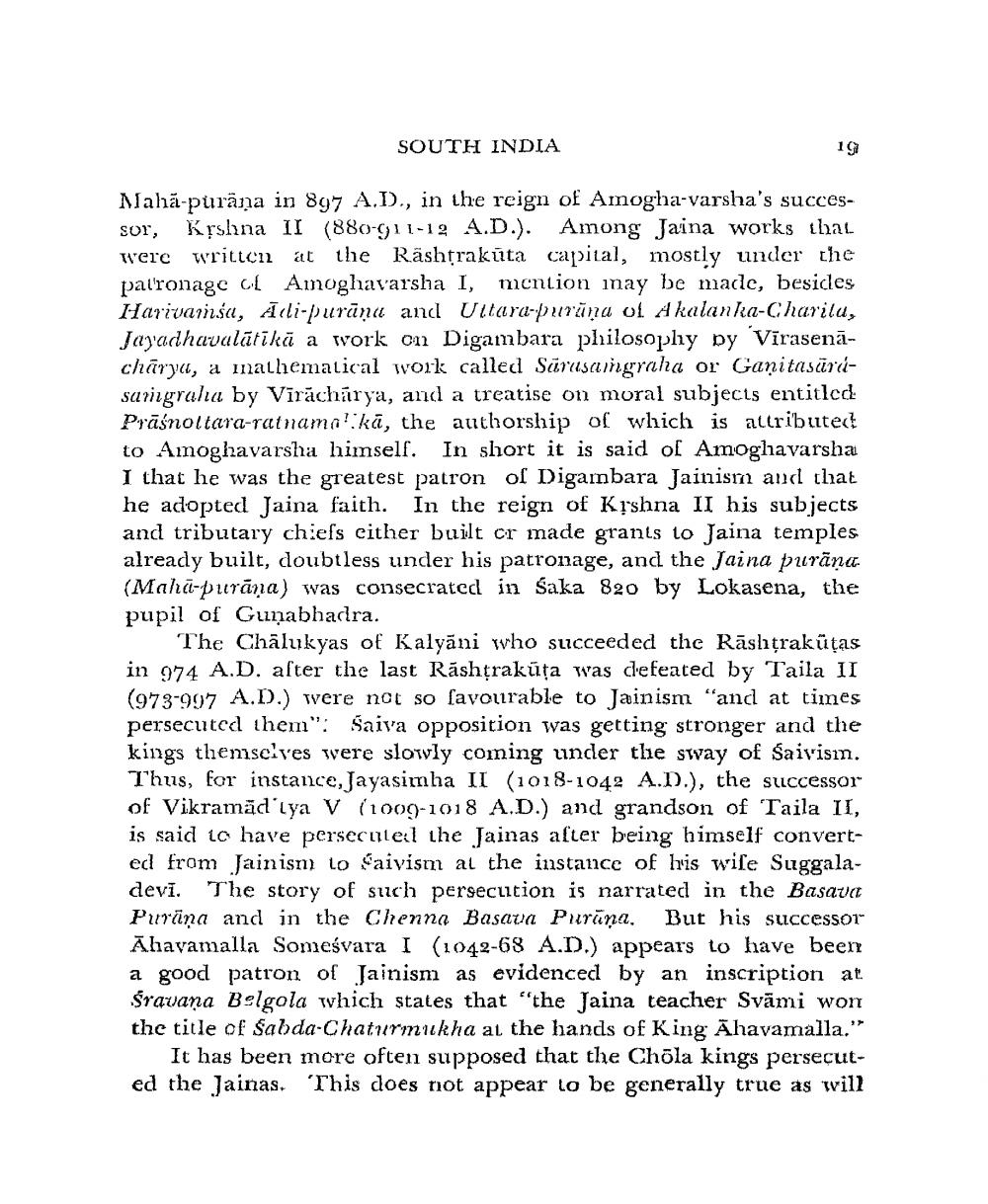________________
SOUTH INDIA
19
Mahā-puräna in 897 A.D)., in the reign of Amogha-varsha's successor, Kțshna II (880-911-19 A.D.). Among Jaina works thal were written at the Rashtrakūta capital, mostly under the patronage L Amoghavarsha I, mention may be made, besides Harivainsa, Adi-purūna and Uttara-purāņa ol Akalanka-Charilu, Jayadhavalātikā a work on Digambara philosoply by Vīrasenācharya, a mathematical work called Sūrusamgraha or Ganitasurusarigrala by Vīrācharya, and a treatise on moral subjects entitled Prāśnoltara-ratnama? kā, the authorship of which is attributed! to Amoghavarsha himself. In short it is said of Amoghavarsha I that he was the greatest patron of Digambara Jainism and that he adopted Jaina faith. In the reign of Krshna II his subjects and tributary chiefs either built cr made grants to Jaina temples already built, doubtless under his patronage, and the Jaina purāņa(Mahapurāna) was consecrated in Saka 820 by Lokasena, the pupil of Guņabhadra.
The Chālukyas of Kalyāni who succeeded the Rāshțrakūtas in 974 A.D. aster the last Răshtrakūta was defeated by Taila II (973-997 A.D.) were not so favourable to Jainism "and at times persecuted them": Saiva opposition was getting stronger and the kings themselves were slowly coming under the stvay of Saivisin. Thus, for instance, Jayasimha II (1018-1042 A.D.), the successor of Vikramād'lya V (1009-1018 A.D.) and grandson of Taila II, is said to have perseculel the Jainas after being himself converted from Jainism to faivism at the instance of his wife Suggaladevī. The story of such persecution is narrated in the Basava Purana and in the Chenna Basava Purūna. But his successor Ahavamalla Someśvara I (1042-68 A.D.) appears to have been a good patron of Jainism as evidenced by an inscription at Śravana Belgola which states that "the Jaina teacher Svāmi won the title of Sabda-Chaturmukha at the hands of King Ahavamalla."
It has been more often supposed that the Chola kings persecuted the Jainas. This does not appear to be generally true as will




